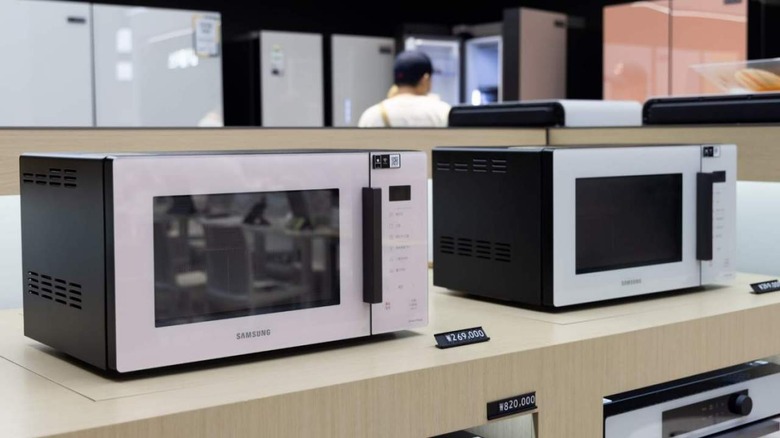The Reason Microwaves Were Originally Invented
Microwaves are a handy invention, which is why around 90% of American households now own one, according to the US Bureau of Labor Statistics. The appliances have a long history, too. Initially, microwave units were heavy, expensive, and mostly found in trains, ships, and restaurants where food was regularly cooked for a large number of people. Per Quartz, the less-bulky and cheaper models for the home were only developed in 1955.
The model, made by defense contractor Raytheon, cost around $1,300. The company sold the appliance for more than a decade, and, in 1967, it finally released an updated version that was easier on the wallet at about $500 — one with the same general design as microwaves found in many modern kitchens.
Considering the microwave oven's usability, its journey to becoming a household name didn't come as a surprise. In its commercials, this revolutionary kitchen equipment was said to make a "cook's life easy." By 1980, around 20% of American households owned a microwave (via WaPo).
When we look back at their history, microwaves are nothing short of a wacky invention — they were invented by accident by one of Raytheon's most valued engineers, Percy Spencer.
Accident leads to the modern microwave
Over 70 years ago, Percey Spencer — the popular scientist at Raytheon — found that his snack had melted in his pocket during an experiment involving a magnetron, which was a type of vacuum tube that generated microwaves and was used in early radar systems. Prior to the invention of the microwave oven, microwave technology was only used as part of radar systems to gauge the distance between objects.
"Gramps was loud, wanted to make everything happen at all times," the engineer's grandson George "Rod" Spencer Jr. said of his grandfather in an interview with Popular Mechanics.
Some say the melted snack that inspired Spencer was a chocolate bar, but Rod believes it was popcorn. The curious engineer soon ran more tests, including one involving an egg that exploded moments later, covering his face. "I always thought that this was the origin of the expression 'egg in your face,'" Spencer Jr. told the outlet.
The first microwave appliance arrived on the market a year after Spencer's discovery. According to Wired, the massive device cost more than $2,000 and weighed around 750 pounds. In the years that followed, microwaves became cheaper and hit the mainstream American consumer market, becoming one of the most popular kitchen appliances.

